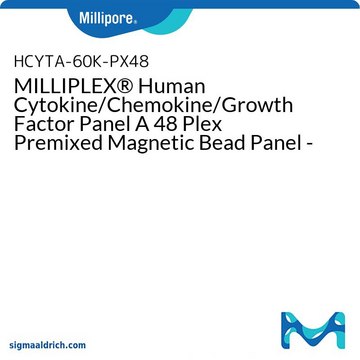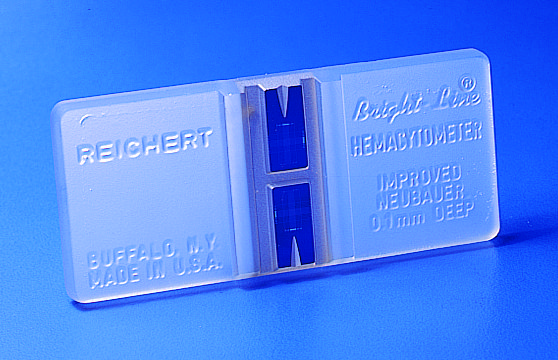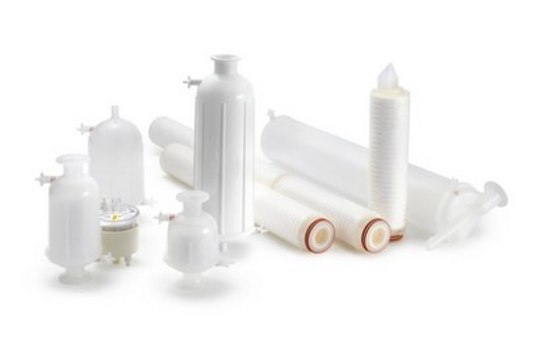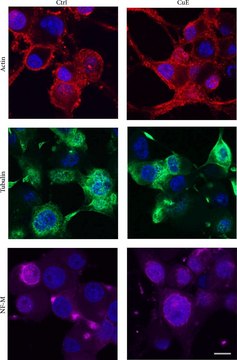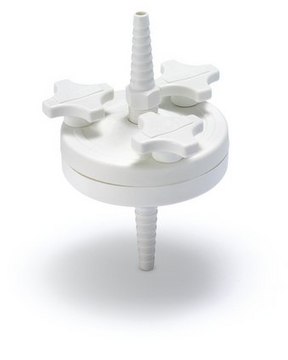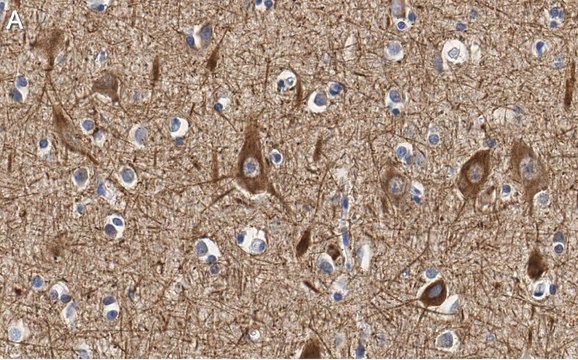MAB1592
Anti-Neurofilament H & M Antibody, phosphorylated, clone NP1
ascites fluid, clone NP1, Chemicon®
Synonym(s):
Anti-CMT2CC, Anti-NFH
About This Item
Recommended Products
biological source
mouse
antibody form
ascites fluid
antibody product type
primary antibodies
clone
NP1, monoclonal
species reactivity
bovine, rat, human, chicken
manufacturer/tradename
Chemicon®
technique(s)
ELISA: suitable
flow cytometry: suitable
immunocytochemistry: suitable
immunohistochemistry: suitable (paraffin)
radioimmunoassay: suitable
western blot: suitable
isotype
IgG1
NCBI accession no.
shipped in
dry ice
target post-translational modification
phosphorylation (not specified)
Gene Information
bovine ... Nefm(281347)
chicken ... Nefm(396206)
human ... NEFM(4741)
rat ... Nefm(24588)
General description
Specificity
Immunogen
Application
Neuroscience
Neurofilament & Neuron Metabolism
Neuronal & Glial Markers
Immunohistochemistry. Works on paraffin embedded, formalin fixed and frozen acteone fixed tissue sections. 1:50-1:500 for immunofluorescence.
Immunocytochemistry on PC12, TERA-2 and other neuronal lines.
FACS ELISA/RIA
Optimal working dilutions must be determined by end user.
Linkage
Physical form
Storage and Stability
Legal Information
Disclaimer
Not finding the right product?
Try our Product Selector Tool.
Storage Class Code
10 - Combustible liquids
WGK
WGK 1
Flash Point(F)
Not applicable
Flash Point(C)
Not applicable
Certificates of Analysis (COA)
Search for Certificates of Analysis (COA) by entering the products Lot/Batch Number. Lot and Batch Numbers can be found on a product’s label following the words ‘Lot’ or ‘Batch’.
Already Own This Product?
Find documentation for the products that you have recently purchased in the Document Library.
Our team of scientists has experience in all areas of research including Life Science, Material Science, Chemical Synthesis, Chromatography, Analytical and many others.
Contact Technical Service

